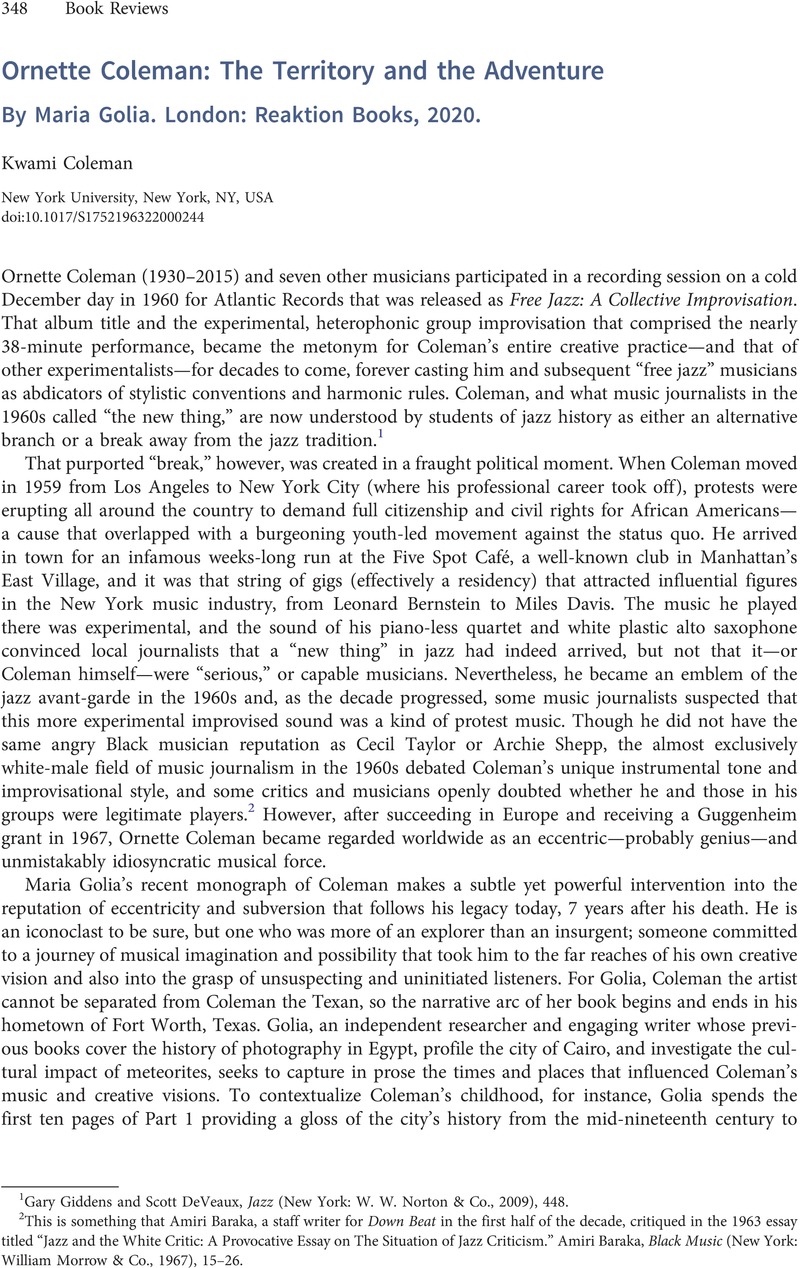No CrossRef data available.
Published online by Cambridge University Press: 24 August 2022

1 Giddens, Gary and DeVeaux, Scott, Jazz (New York: W. W. Norton & Co., 2009), 448Google Scholar.
2 This is something that Amiri Baraka, a staff writer for Down Beat in the first half of the decade, critiqued in the 1963 essay titled “Jazz and the White Critic: A Provocative Essay on The Situation of Jazz Criticism.” Baraka, Amiri, Black Music (New York: William Morrow & Co., 1967), 15–26Google Scholar.
3 Coleman was invited to commemorate that occasion and, after almost two decades, the venue was converted into a steak house in 2002.
4 See, for example, Litweiler, John, Ornette Coleman: A Harmolodic Life (New York: William Murrow & Co., 1992)Google Scholar; Wilson, Peter Niklas, Ornette Coleman: His Life and Music (Berkeley, CA: Berkeley Hills Books, 1999)Google Scholar; and Rush, Stephen, Free Jazz, Harmolodics, and Ornette Coleman (New York: Routledge, 2017)Google Scholar. Notably, Rush's book comprises mostly of the author's lengthy interview with Coleman and covers the conceptual and metaphysical elements of his musical thinking, which includes his theory of harmolodics.
5 For an example of Coleman's early press coverage see Gene Lees, “The Compleat [sic] Jazz Critic,” Down Beat Music 1961 [Yearbook] 6, no. 1 (1961): 13–15.
6 Litweiler, John, Ornette Coleman: The Harmolodic Life (London: Quartet Books, 1992)Google Scholar.